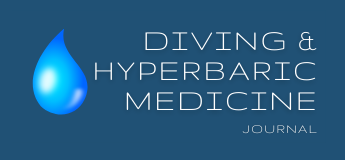2024 March;54(1Suppl)
Diving Hyperb Med. 2024 March 31;54(1Suppl):1−53. doi: 10.28920/dhm54.1.suppl.1-53. PMID: 38537300. PMCID: PMC11168797.
Decompression illness: a comprehensive overview
Simon J Mitchell1,2,3
1 Department of Anaesthesiology, School of Medicine, University of Auckland, Auckland, New Zealand
2 Department of Anaesthesia, Auckland City Hospital, Auckland, New Zealand
3 Slark Hyperbaric Medicine Unit, North Shore Hospital, Auckland, New Zealand
Corresponding author: Professor Simon Mitchell, Department of Anaesthesiology, School of Medicine, University of Auckland, Private Bag 92019, Auckland 1142, New Zealand
ORCiD: 0000-0002-5149-6371
Keywords
Arterial gas embolism; Decompression sickness; Pathophysiology; Prevention; Pulmonary barotrauma; Symptoms; Treatment
Abstract
(Mitchell SJ. Decompression illness: a comprehensive overview. Diving and Hyperbaric Medicine. 2024 March 31;54(1Supp):1−53. doi: 10.28920/dhm54.1.suppl.1-53. PMID: 38537300. PMCID: PMC11168797.)
Decompression illness is a collective term for two maladies (decompression sickness [DCS] and arterial gas embolism [AGE]) that may arise during or after surfacing from compressed gas diving. Bubbles are the presumed primary vector of injury in both disorders, but the respective sources of bubbles are distinct. In DCS bubbles form primarily from inert gas that becomes dissolved in tissues over the course of a compressed gas dive. During and after ascent (‘decompression’), if the pressure of this dissolved gas exceeds ambient pressure small bubbles may form in the extravascular space or in tissue blood vessels, thereafter passing into the venous circulation. In AGE, if compressed gas is trapped in the lungs during ascent, pulmonary barotrauma may introduce bubbles directly into the pulmonary veins and thence to the systemic arterial circulation. In both settings, bubbles may provoke ischaemic, inflammatory, and mechanical injury to tissues and their associated microcirculation. While AGE typically presents with stroke-like manifestations referrable to cerebral involvement, DCS can affect many organs including the brain, spinal cord, inner ear, musculoskeletal tissue, cardiopulmonary system and skin, and potential symptoms are protean in both nature and severity. This comprehensive overview addresses the pathophysiology, manifestations, prevention and treatment of both disorders.
Copyright: This article is the copyright of the authors who grants Diving and Hyperbaric Medicine a non-exclusive licence to publish the article in electronic and other forms.
Publication Type: Journal article
Full article available here.
